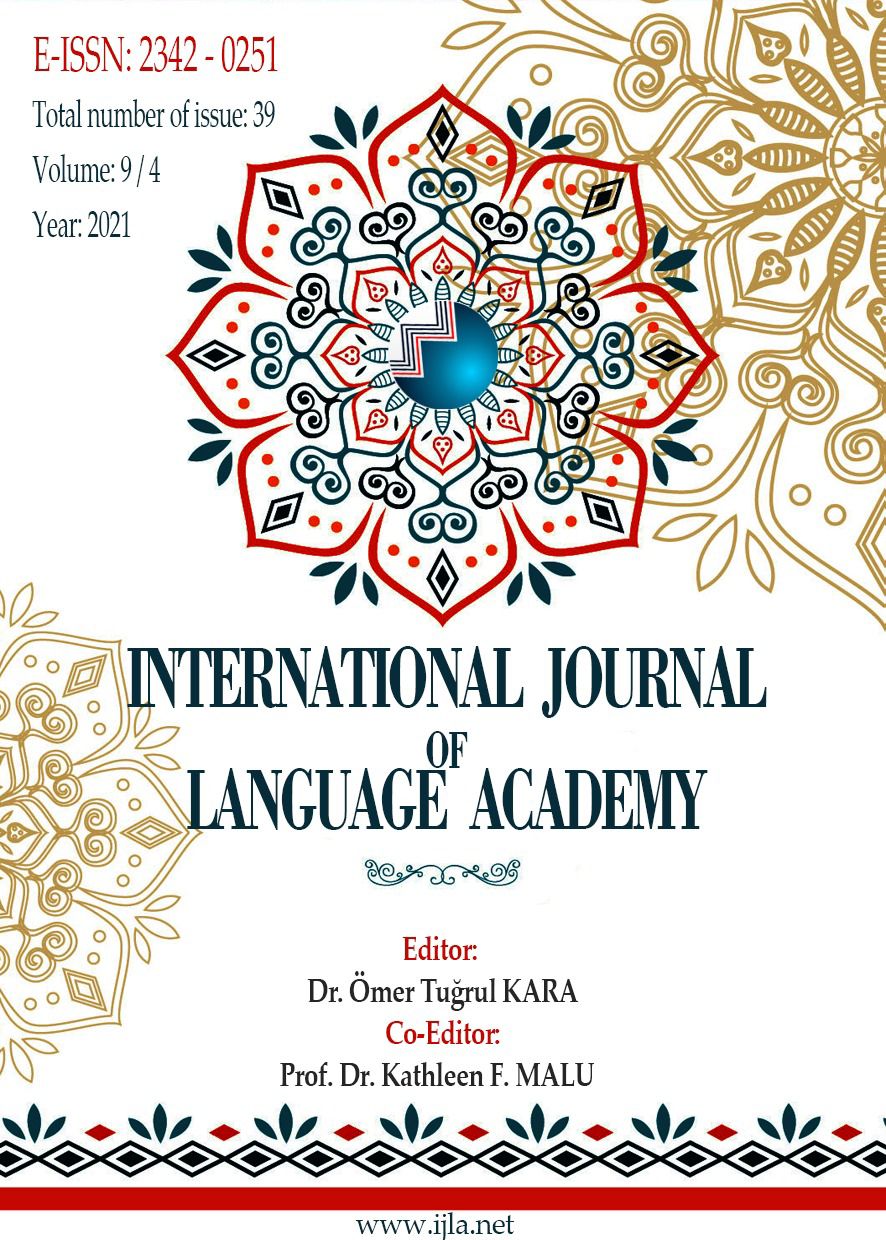Author :
Abstract
Keywords
Abstract
Margaret Atwood's post-apocalyptic novel The Year of the Flood presents a dystopian world that appropriately aligns with the ecofeminist discourse, which emphasizes the parallelism between male domination of women and human domination of nature. In this dystopian future fiction, the (more) advanced capitalism has compelled national states to fall under the control of multinational corporations which rule the world. In such a system, public health and environmental problems have been replaced by other priorities. This new phase of the capitalist system, among many other problems and burdens, leads to the existence of a cultural atmosphere in which having a young and beautiful appearance not only creates psychological pressure due to high social expectations and sexual objectification of women but also the products used for this end cause serious health problems in many cases. This paper examines the life experiences of three women characters; the daughter of an air conditioner dealer who killed himself after becoming unemployed because of his wife's health expenses; the incompatible and emotionally depressed daughter of a murdered executive from the privileged corporate world, and an illegal immigrant who grew up on the streets and eventually became a bio-artist. Their life stories provide rewarding themes for discussion about the current ecofeminist concerns and concepts such as modern technology, economic structure, and belief systems. A detailed reading of the novel shows the debilitating effects of capitalism and environmental problems on society and the individual, especially on working-class women
Keywords
- Apap, J. (2019). The concept of ‘climate refugee’, briefing, European Parliamentary Research Service (EPRS), viewed 25 October 2020,
- Atwood, M. (2009). The Year of the Flood. New York: Random House.
- Berger, J. (1999), After the end: representations of post-apocalypse, Minneapolis: University of Minnesota Press.
- Bouson, JB. (2011). ‘We’re using up the earth. It’s almost gone’: A return to the post- apocalyptic future in Margaret Atwood’s The Year of the Flood. The Journal of Commonwealth Literature, vol. 46, pp. 9-26.
- Calogero, RM, Boroughs, M. & Thompson, JK. (2007). The impact of western beauty ideals on the lives of women and men: A sociocultural perspective, in Swami V & Furnham A (eds.), Body Beautiful: Evolutionary and Sociocultural Perspectives (pp. 259-98). New York: Palgrave Macmillan.
- Egan, M. (2007). Barry Commoner and the science of survival the remaking of American environmentalism. Cambridge, Massachusetts: The MIT Press.
- FAO (Food and Agriculture Organization of The United Nations). (2010). Global Forest Resources Assessment 2010, Main report, Food and Agriculture Organization of The United Nations, Rome.
- FAO (Food and Agriculture Organization of The United Nations). (2020). Global Forest Resources Assessment 2020, Key Findings, Food and Agriculture Organization of
- Featherstone, M. (1983). Consumer culture: an introduction, Sage Journals, Vol. 1, no. 3, pp. 4-9.
- Fitton, N & Alexander, P & Arnell, N & Bajzelj, B & Calvin, K & Doelman, J & Gerber, J & Havlík, P & Hasegawa, T & Herrero, M & Krisztin, T & Meijl, H & Powell, T & Sands, R & Stehfest, E. & West, P & Smith, P. (2019). The vulnerabilities of agricultural land and food production to future water scarcity. Global Environmental Change, Vol. 58, viewed 18 October 2019,
- Gershon, L. (2018). The invention of the passive fairy tale heroine. JSOR Daily, viewed 21 March 2018,
- Glenn, EN. (2008). Yearning for lightness: transnational circuits in the marketing and consumption of skin lighteners, Gender and Society, vol. 22, no. 3, pp. 281–302.
- Gonzalez-Barrera, A & Krogstad, JM. (2019). What we know about illegal immigration from Mexico. News in the Numbers, 28 June, Pew Research Center. Washington, D.C. viewed 5 August 2019,
- Juncker, JC. (2015). State of the union 2015: time for honesty, unity and solidarity, speech, 15 September, viewed 5 October 2018,
- Khan, R. (2011). Stop using the word “Caucasian” to mean white, article, 22 January, Discovery Magazine, viewed 22 March 2018,
- Marx, K. (1988). Economic and Philosophic Manuscripts of 1844, New York: Prometheus Books.
- Orbis Research. (2018). Global cosmetics products market analysis of growth trends and forecasts 2018-2023, Orbis Research, Dallas, Texas, 15 February 2019,
- PETA, (2010). Wake up, Canada! End the cruel seal slaughter. social responsibility project. viewed 7 October 2019,
- Rosengren L. (2010). Drivers for change, Public Service Review: International Development, issue 17, pp. 32-4.
- Schneider, LJ. (2012). Sold into extinction: The global trade in endangered species. Santa Barbara, California: Praeger.
- Serraos, K. (2012). Culture and urban planning. Sustainable Development, Culture, Traditions, Vol. 1, pp. 31-50.
- Tyson, L. (2006). Critical Theory Today. New York: Routledge
- UN The Humane Society. (2018). About the Canadian seal hunt, article, viewed 10 October 2019,
- Xie, Q & Zhang, M. (2013). ‘White or tan? A cross-cultural analysis of skin beauty advertisements between China and the United States’, Asian Journal of Communication, Vol. 23, no. 5, pp. 538–54.
- Wilde, L. (2000). ‘The creatures, too, must become free’: Marx and the animal/human distinction. Capital & Class, no.72, autumn, viewed 23 April 2018,
- Zion Market Research, (2018). Dietary supplements market by ingredients (botanicals, vitamins, minerals, amino acids, enzymes) for additional supplements, medicinal supplements and sports nutrition applications - global industry perspective, comprehensive analysis and forecast, 2016 – 2022. Zion Market Research, New York, viewed in 15 February 2019,





